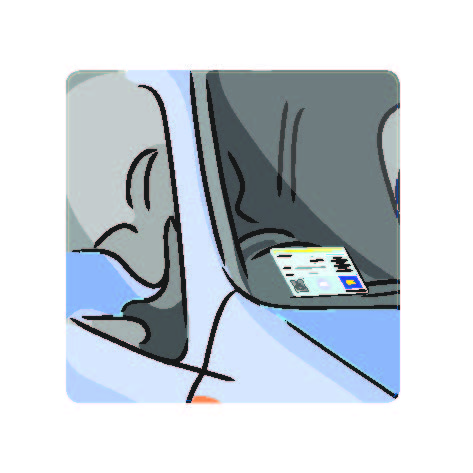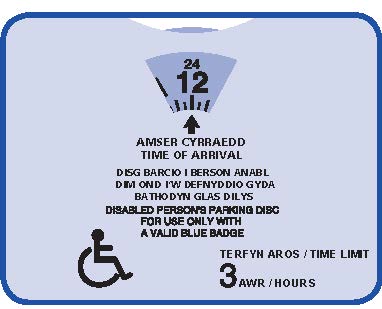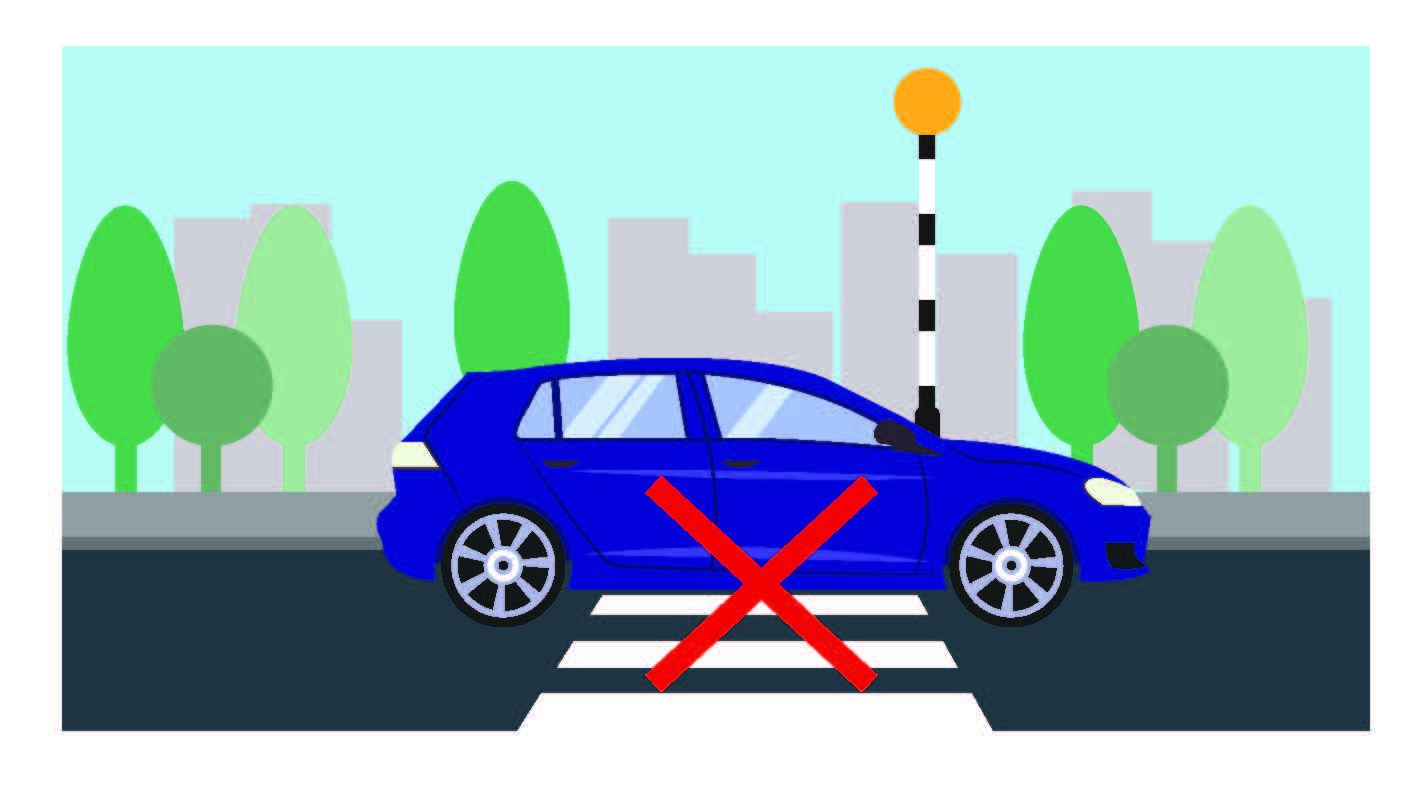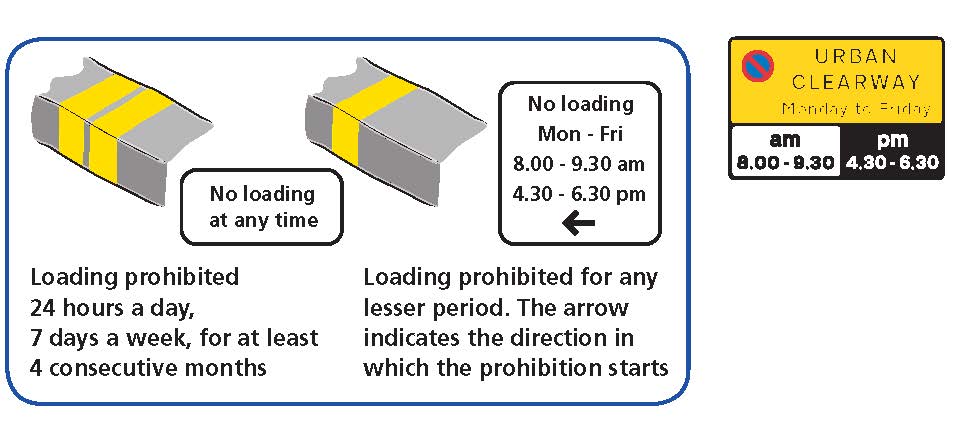The Blue Badge Scheme: rights and responsibilities in Wales
Advice about where Blue Badge holders can park and how to use their Badge.
This file may not be fully accessible.
In this page
Your responsibilities as a Blue Badge holder
The purpose of the scheme is to give greater access to services by allowing badge holders to park near their destination either as a passenger or driver, it is not to provide free parking.
You must use the Blue Badge properly. It is a criminal offence for you or anyone else to misuse the badge, and doing so could lead to a £1,000 fine. Making sure that the scheme is not abused will benefit genuine badge holders, such as yourself.
If you are a passenger it is your responsibility to make sure that the driver is aware of all the rules set out in this leaflet.
The badge is intended for on-street parking only. Off-street car parks, such as those provided in hospitals, supermarkets or local authority car parks are governed by separate rules.
You must never copy the badge or attempt to alter the details.
Who can use the badge?
The badge is for your use only. It must only be displayed if you are travelling in the vehicle as a driver or passenger, or if someone is collecting you or dropping you off and needs to park at the place where you are being collected or dropped.
Do not allow other people to use the badge even if it is for shopping or collecting something for you, unless you are travelling with them.
- You must never give the badge to friends or family to allow them to park for free, even if they are visiting you. Non-disabled people should not take advantage of the benefits from your badge while you sit in the car.
How to display the badge
- When using the parking concessions you must display the badge on the dashboard of your vehicle or attach it to your bike where it can be clearly seen.
- If there is no dashboard in your vehicle, you must still display the badge in a place where it can be clearly read from outside the vehicle.
- The front of the badge should face upwards, showing the wheelchair symbol.
- The side showing the photograph should not be visible through the windscreen.
You must ensure details on the front of the badge can be clearly read. Incorrect display of the badge may result in a parking fine.

When you need to use a parking clock
When you park on yellow lines or in other places where there is a time restriction, you need to display the blue parking clock to show your time of arrival.
You must display it on the vehicle’s dashboard or facia panel, so that the time can be seen clearly through the front windscreen. The clock should be set to show the quarter hour period during which you arrived. If there is no dashboard or facia panel you must still display the clock in a place where it can be clearly read from outside the vehicle.
Power to inspect the badge
Police officers, traffic wardens, parking attendants and civil enforcement officers have the power to inspect and seize the badge and if asked you must show it to them. If you do not, you will be breaking the law and you could be fined up to £1,000.
These people should produce an identity card with their photograph on it to prove they are who they say they are.

Expired badge
- You are responsible to ensure that your badge is in date.
- You can reapply for a new badge from your local authority 12 weeks before it runs out.
- You can also reapply for the badge online at GOV.UK.
- Do not use the badge if it has expired as you may be fined and could face prosecution.
If your badge has been misused your local authority may refuse to issue you with a new one.
Returning the badge
You must return the badge securely to your issuing local authority if:
- your impairment improves and you are no longer eligible;
- a replacement badge has been issued for one that is lost or stolen and the original is found/recovered (then the original badge must be returned);
- the badge becomes damaged or unreadable;
- the badge is no longer required;
- on the death of the badge holder.
If you or anyone else continues to display the badge when you no longer need it you/they may be fined up to £1,000, and/or face prosecution.
The local authority can ask for the badge to be returned if it is being misused.
If you lose your badge
- Lost or stolen badges should be reported to the police immediately.
- Contact your issuing local authority providing them with the crime reference number.
- Your local authority will arrange for a replacement badge and may charge a fee of up to £10.00 for this service.
Drivers who hold a Blue Badge
If you are a driver and your impairment or illness is likely to affect your ability to drive (even if your car is adapted), the law says you must tell the Driver and Vehicle Licensing Agency (DVLA).
For more information you can contact the DVLA on 0300 790 6806, write to DVLA, Swansea, SA99 1TU or email them at eftd@dvla.gsi.gov.uk
Summary: When to contact your Local Authority
You should always tell your local authority if your circumstances change, such as:
- if the badge has expired;
- the badge is lost, stolen or damaged;
- you change address;
- your surname changes;
- your photograph needs updating if no longer recognisable.
The Blue Badge scheme is administered and enforced by your local authority and you should always contact them first for further information.
Where can I park?
If you do not drive yourself, it is important that you share this information with anyone who will be carrying you as a passenger.
Where can you park
The following table lists the parking concessions available to you as a Blue Badge holder. However, you must always check signs to see what the rules are when parking.
Place | Conditions |
|---|---|
| Yellow lines | Badge holders may park on single or double yellow lines for up to three hours if it is safe to do so and do not cause an obstruction but not where there are restrictions on loading or unloading – indicated by yellow kerb dashes and/or signs on plates. (Always check whether a particular local authority has chosen to exempt Blue Badge holders from this restriction.) You are not entitled to park on yellow lines in off-street car parks. You must display the Blue Badge and the blue parking clock showing the quarter hour period during which you arrived. You must wait for at least one hour after a previous period of parking before you can park the same vehicle in the same road or part of a road on the same day. |
| ‘On-street’ parking meters and pay-and-display machines | Some local authorities allow blue badge holders to park for free for as long as they need to. Others have not adopted this policy. Always check with the relevant authority before parking to avoid a potential fine. You must display the Blue Badge. |
| ‘On-street’ disabled parking bays. (Signs have a blue wheelchair symbol). | You may park for free and without time limit unless signs say otherwise. (Check local signs for information). You must display the Blue Badge. Always try to use these bays instead of parking on yellow lines. |
Places you need to check before parking
There are a number of restrictions and local parking schemes which you need to be aware of. This is a list of places and the parking restrictions in force. If in doubt, ask the relevant authority before you travel.
| Place | Conditions |
|---|---|
| Off-street car parks (such as supermarket, hospital or local authority car parks). | Off-street car park operators should provide parking spaces for disabled people. However, it is up to the car park owner to decide whether badge holders can park free of charge. Do not assume you can always park for free. |
| Town centres where local schemes are in operation. | Please check local signs for information. |
| On-street parking areas where all motorists can park for free but only for a limited time. | Badge holders may park for as long as they wish unless signs say otherwise. Please check with signs before parking. If there is a time limit please display the blue parking clock which should be set to show the quarter hour period during which you arrived. |
| Road systems at airports. | Contact the airport in advance to check the parking arrangements. |
| Private roads. | Do not park unless you have permission from the owner(s). |
Places where you cannot park

The scheme does not apply on private roads and in off-street car parks. However, some operators may provide spaces for people with impairments. You should check the signs for what concessions are available, and whether badge holders have to pay.
The Blue Badge is not a licence to park anywhere. Like other road users, you must obey the rules of the road, as laid out in the Highway Code.
Here is a list of places where you must not park:
- places where a ban on loading or unloading is in force, normally indicated by yellow marks on the kerb. Roadside signs display times of operation for loading bays
- parking places reserved for specific users such as resident’s bays, permit holders or loading bays. (Always check whether a particular local authority has chosen to exempt Blue Badge holders from these restrictions)
- pedestrian Zones unless Blue Badge holders are exempt (check signs)
- pedestrian crossings (zebra, pelican, toucan and puffin crossings), including areas marked by zig-zag lines
- clearways (no stopping)
- a bus stop clearway during its hours of operation
- an urban clearway within its hours of operation. You may pick up or drop off passengers. All parking is forbidden
- school ‘keep clear’ markings during the hours shown on a yellow no-stopping plate
- other ‘keep clear’ markings where you must not park at any time e.g. where emergency vehicles require access, vehicles such as doctors, taxis and other emergency vehicles
- bus, tram or cycle lanes or cycle tracks. Badge holders are not entitled to drive in bus lanes during their hours of operation
- where there are double white lines in the centre of the road (even if one of the lines is broken)
- suspended meter bays or when use of the meter is not allowed
- where temporary parking restrictions are in force, as shown for example by no-waiting cones.
- across dropped kerbs whether or not they are indicated by ‘H’ bar markings

Safe and responsible parking
Do not park where it would endanger, inconvenience or obstruct pedestrians or other road users.
Do not park on footways (pavements) that cause obstruction to pedestrians.
Examples of dangerous or obstructive parking include the following, although there are others:
- school entrances, bus stops, on a bend, or near the brow of a hill or hump bridge
- parking opposite or within 10 meters (32 feet) of a junction, except in an authorised parking space
- where it would make the road narrow, such as by a traffic island or roadworks
- where it would hold up traffic, such as in narrow stretches of road or blocking vehicle entrances
- where emergency vehicles stop or go in and out, such as hospital entrances
- where the kerb has been lowered or the road raised
- on a pavement, unless signs permit it

The Blue Badge is not a licence to park anywhere. If you park where it would cause an obstruction or danger to other road users you could be fined or have your vehicle removed.
Remember
If you do not drive yourself, you should share the information in this leaflet with the person who will be carrying you as a passenger.
You cannot legally be wheel-clamped on the public highway (‘on-street’) for parking offences, provided you correctly display a valid Blue Badge according to the rules of the scheme. Parking in forbidden areas or where it would endanger or obstruct other road users is an offence, which could result in you receiving a parking fine.
You could also be prosecuted, have your car towed away and the badge withdrawn.
Badges for organisations
Organisations that both care for and transport disabled people who would qualify for a Blue Badge in their own right may apply for an organisational Blue Badge through their local authority. The badge is not allowed to be used at other times.
The following rules apply to organisations in addition to those already stated in this booklet for Blue Badge holders.
An organisational badge will have the stamp or logo of the organisation on the reverse of the badge, rather than a photograph. This side should be hidden from view when the badge is on display.
Organisational badges may only be used when people who would qualify for a Blue Badge in their own right are being transported. The badge should only be displayed when employees of the organisation (using registered organisational vehicles) are dropping off or picking up eligible disabled people from the place where the vehicle is parked.
You must never copy the badge or attempt to alter the details. The badge remains the property of the issuing local authority who can ask for the badge to be returned if it is being misused.
Employees must never use the badge for their own benefit or use it, for example, to carry out errands for the organisation. The badge can only be displayed when disabled people in the care of the organisation are being transported. All employees of the organisation who are responsible for transporting disabled people should be made aware of the rules of the scheme as set out in this leaflet so that they do not unknowingly misuse the badge.
It is a criminal offence for anyone to misuse a badge, and doing so could lead to a £1,000 fine and prosecution.
Further information on the Organisational Badges can be obtained at: Parking, Blue Badges and road offences.
Special rules for returning an organisational badge
In addition to the advice contained in this leaflet, an organisational badge must be returned to the issuing authority if:
- the organisation has ceased to exist
- the organisation no longer cares for people who would qualify for a Blue Badge in their own right
- the badge ceases to be required by the organisation
Please inform your local authority if the organisation changes address.
Other information
Low Emission Zones within the UK
For the latest updates on ‘driving in clear air zones’ please visit the website www.gov.uk/clean-air-zones. It is the Blue Badge holders’ responsibility to check for any restrictions or charges before travelling.
Toll concessions
Toll concessions, travelling in London, Central London Congestion Charge Scheme and travelling abroad.
Blue Badge holders may be exempt from payment of tolls at certain river crossings.
Details on the concessions are available on the gov.uk website at Toll concessions if you have a disability.
Travelling in London
The Blue Badge scheme does not fully apply in certain parts of Central London, therefore,
when planning your travel arrangements please contact the relevant London borough for information or go to: Find your local council for an A to Z of local councils.
Central London Congestion Charge Scheme
As a badge holder you do not have to pay the Congestion Charge. To qualify for the 100% discount from the Charge, you must first register with Transport for London and pay a registration fee of £10. You need to apply at least 10 days before your journey.
You can get a registration form by writing to Congestion Charging, PO Box 344, Darlington DL1 9QE, by visiting the Congestion Charge website at Transport for London: Blue Badge Congestion Charge discount or by calling their helpline on 0343 222 2222 (Text/phone 020 7649 9123).
Travelling abroad
We recommend that holders of Blue Badges travelling outside of the UK print and display a translation document alongside their badge. These can be downloaded through the following links:
- links to country specific information globally: The FIA Guide for the disabled traveller
- advice published by the European Commission: Help and advice for EU nationals and their family
Within the EU, Liechtenstein, Norway and Switzerland
From 1 January 2021 you can use your UK Blue Badge when travelling in some EU countries, Liechtenstein, Norway and Switzerland.
Check which countries accept a UK Blue Badge. Where your UK Blue Badge is recognised in Europe.
Check GOV.UK for latest information. You should always check locally before travelling somewhere new.
Rest of world
There are no current arrangements for you to use the badge outside the European
Union, in countries such as the USA, Canada, Australia or New Zealand, although they may be prepared to recognise the Blue Badge. We advise you to check what concessions are available before travelling to non-EU countries.
